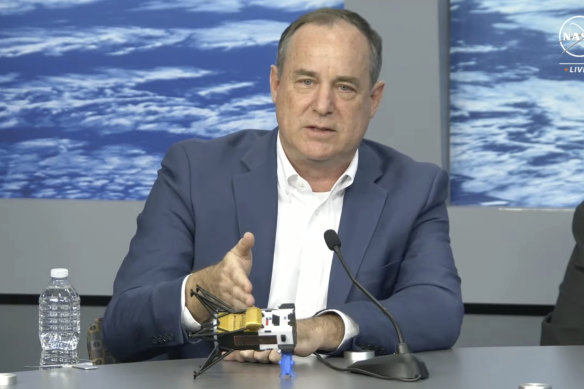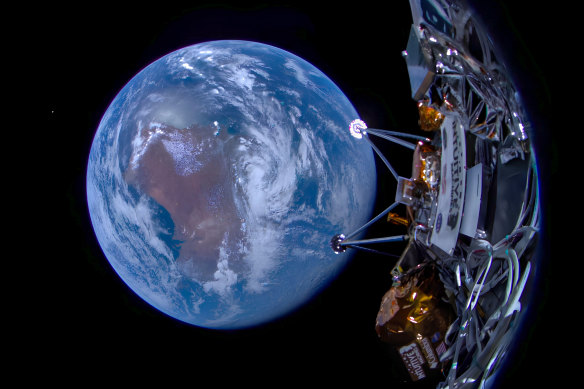
Cape Canaveral: A private US lunar lander has tilted over at touchdown and ended up on its side near the moon’s south pole, hampering communications, company officials say.
Intuitive Machines, the company that built the six-footed lander, initially said the Odysseus lander was upright after touchdown. But on Saturday (AEDT), chief executive Steve Altemus said the craft “caught a foot in the surface and tipped” and landed on its side, likely leaning on a rock.

Steve Altemus, CEO and co-founder of Intuitive Machines, describes how it is believed the company’s Odysseus spacecraft landed on the surface of the moon.Credit: AP
“So far, we have quite a bit of operational capability even though we’re tipped over,” he said.
But some antennae were pointed toward the surface, limiting flight controllers’ ability to communicate and get the right data down, Altemus said.
He said the lander was “near or at its intended landing site.” The Houston company aimed to land in the south polar region, near the Malapert A crater, closer to the pole than anyone else, so NASA could scout the area before astronauts show up later this decade.
It was the first US moon landing in more than 50 years since the Apollo era. The CSIRO’s Murriyang radio telescope at Parkes in central-west NSW has provided support by channelling tracking data from the spacecraft on its million-kilometre voyage.

The Odysseus spacecraft snapped a photo of Australia shortly after takeoff on February 15, with Cyclone Lincoln forming over the nation’s north.Credit: Intuitive Machines
With the touchdown, Intuitive Machines became the first private business to pull off a Moon landing, a feat previously achieved by only five countries. The mission was largely sponsored by NASA, whose experiments were on board. NASA paid $US118 million ($180 million) for the delivery under a program meant to jump-start the lunar economy.
One of the NASA experiments was pressed into service when the lander’s navigation system failed in the final few hours before touchdown. The lander took an extra lap around the moon to allow time for the last-minute switch to NASA’s laser system.









 Add Category
Add Category